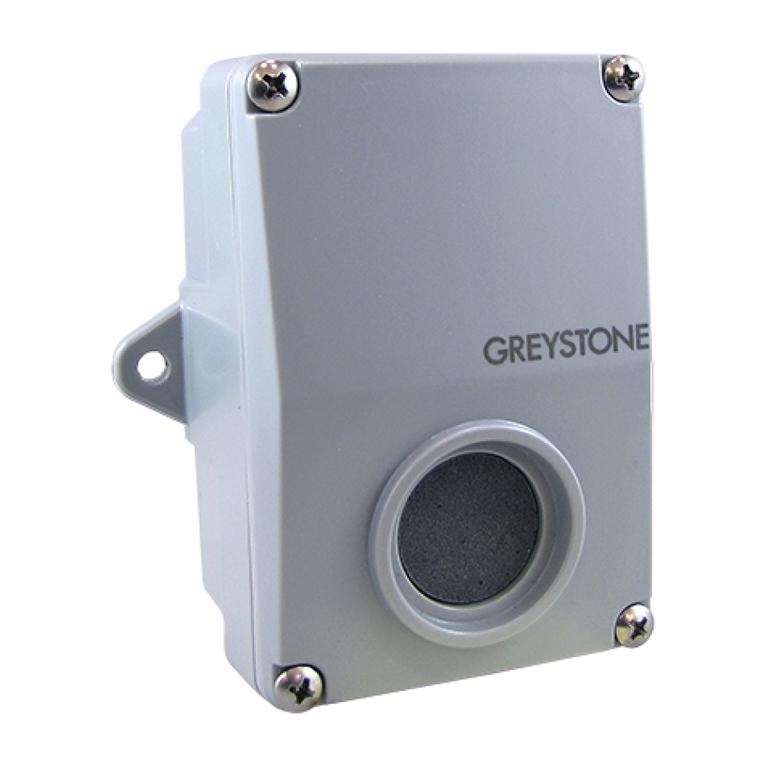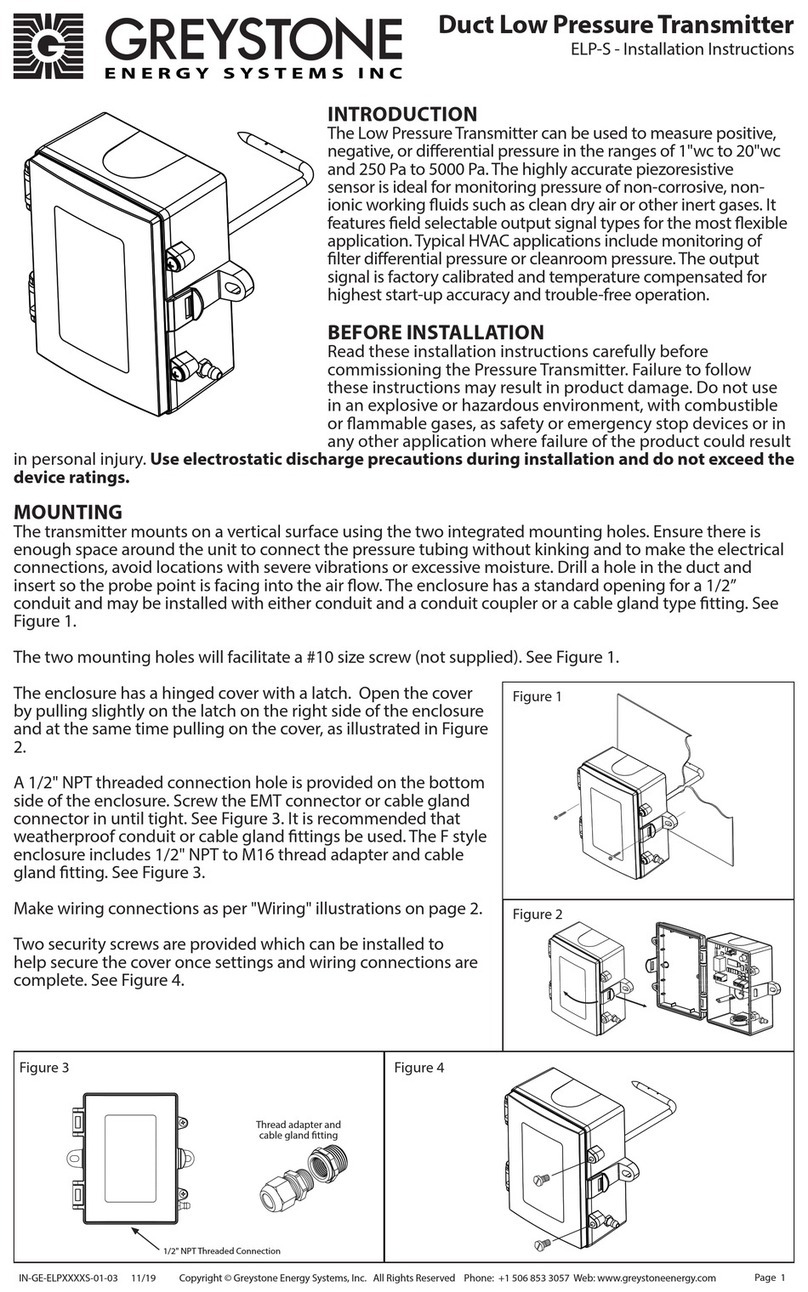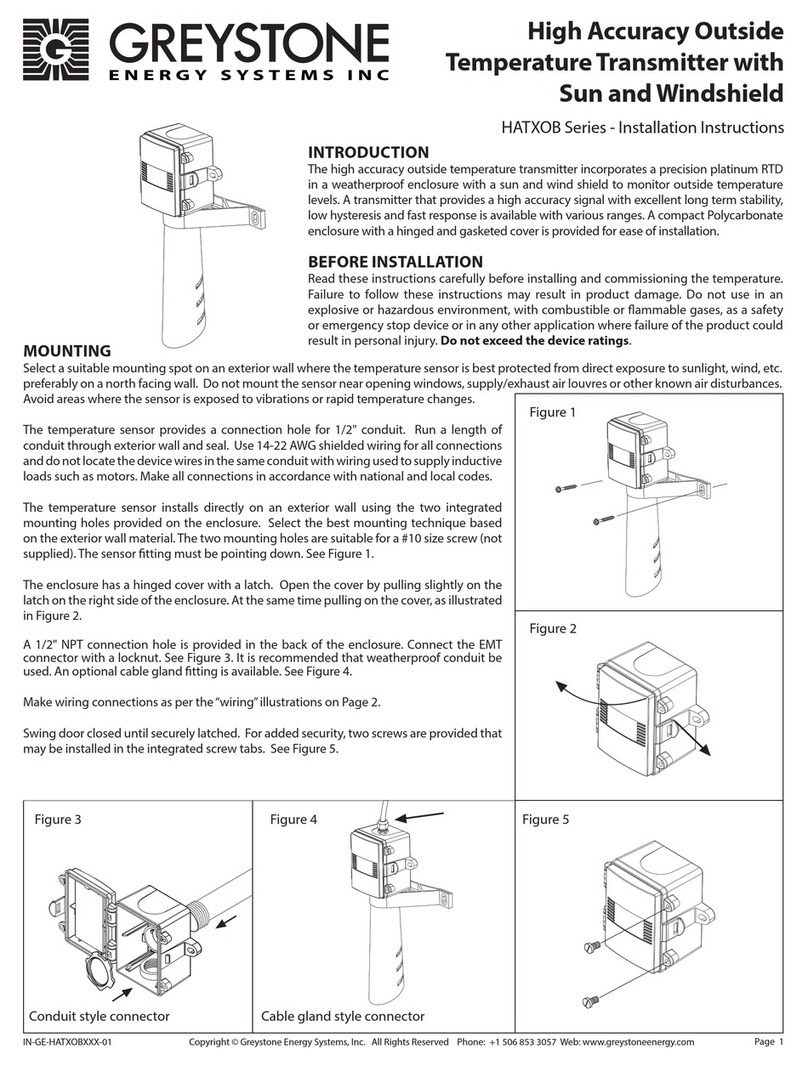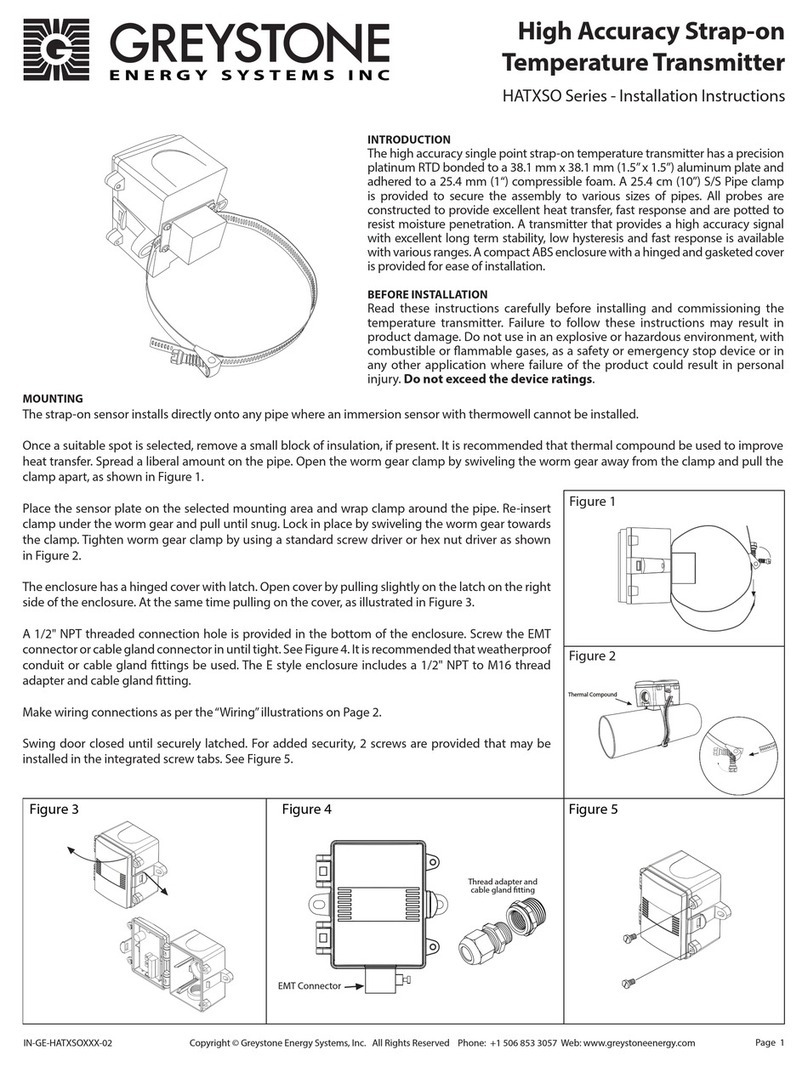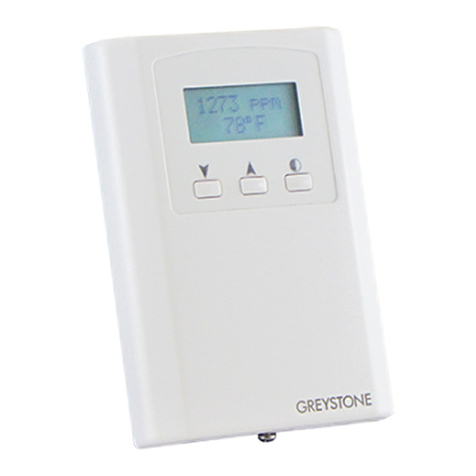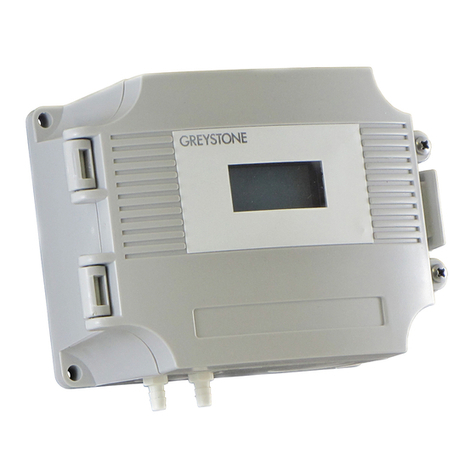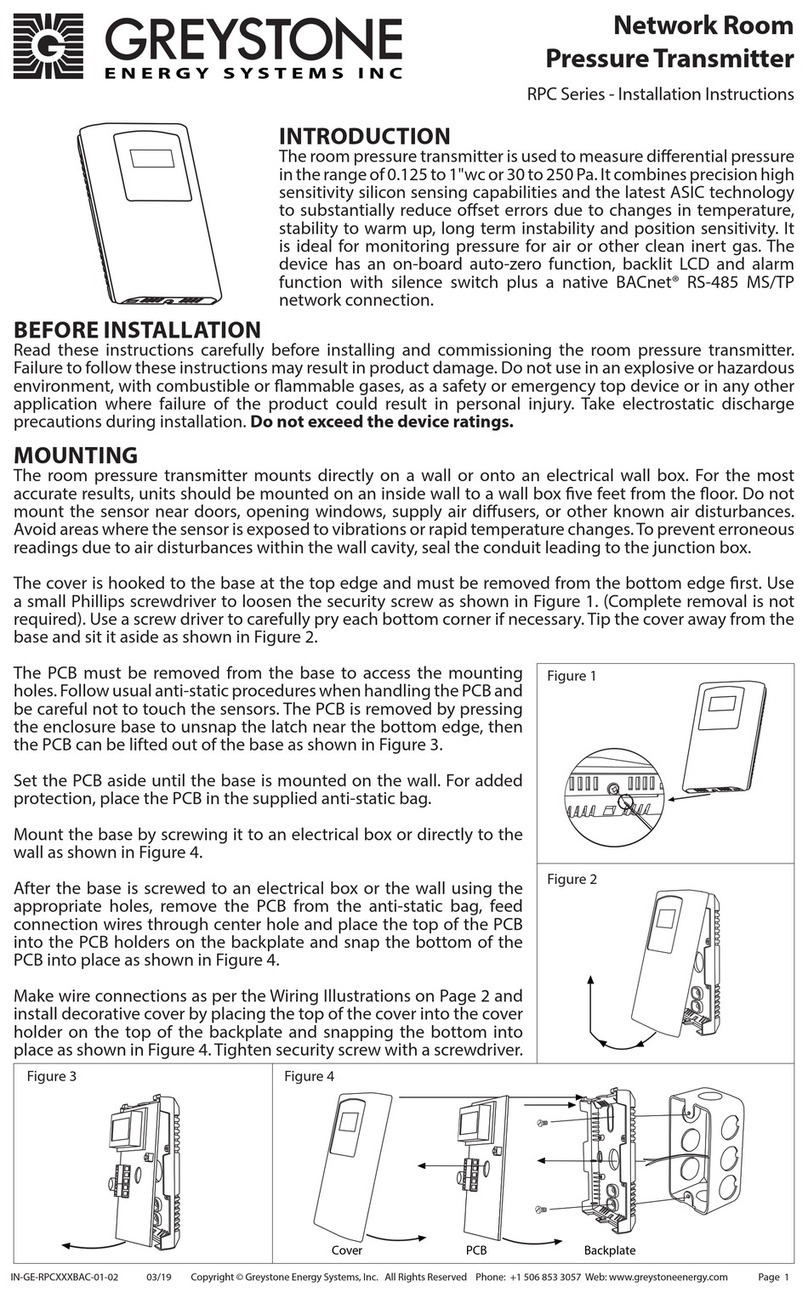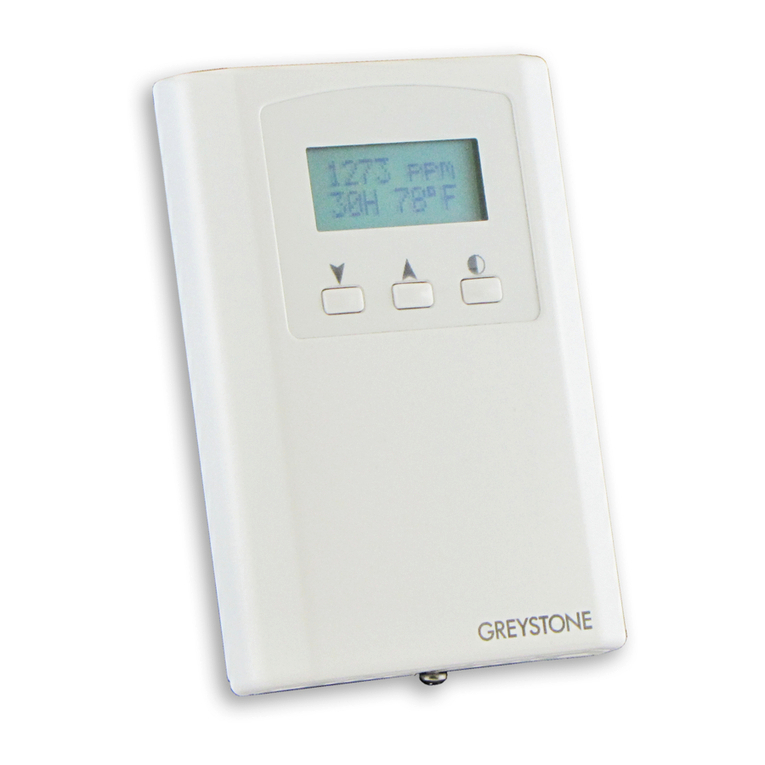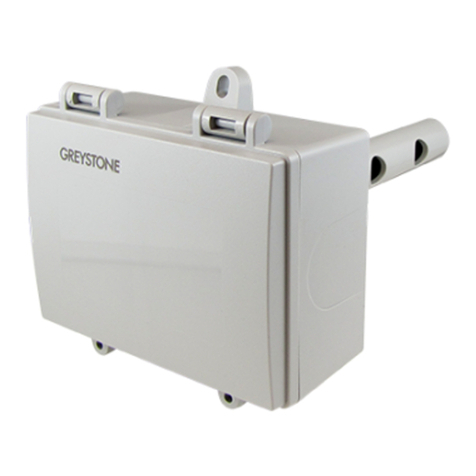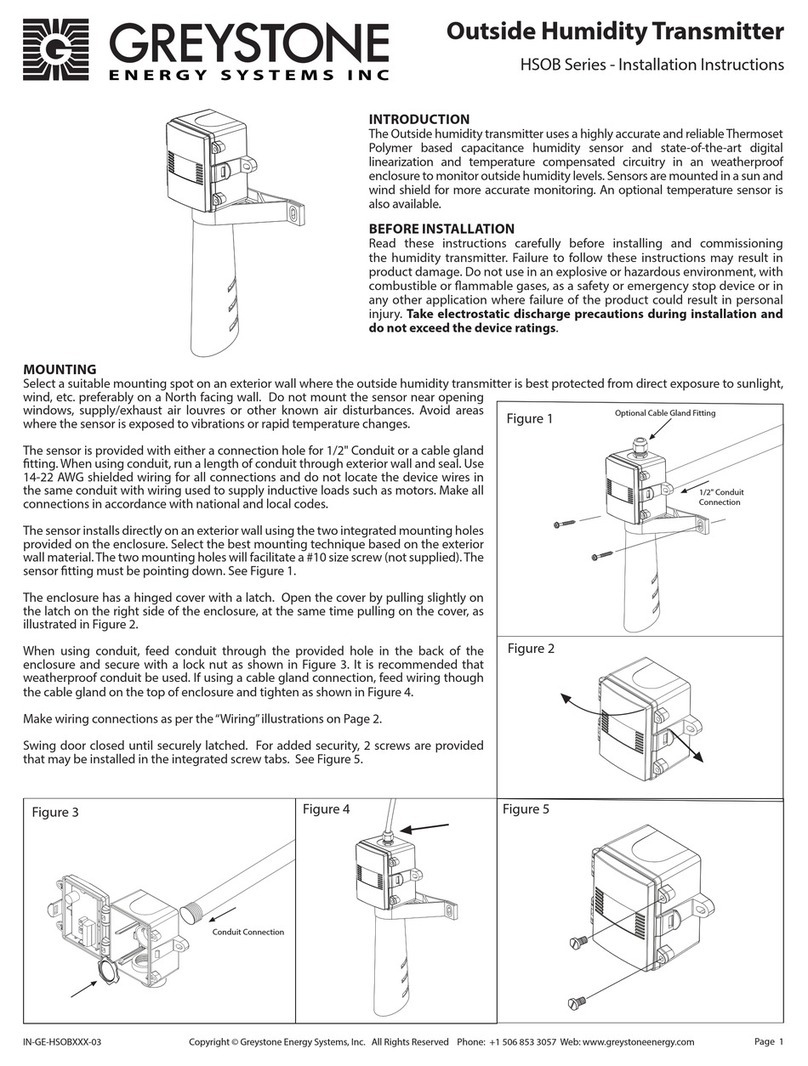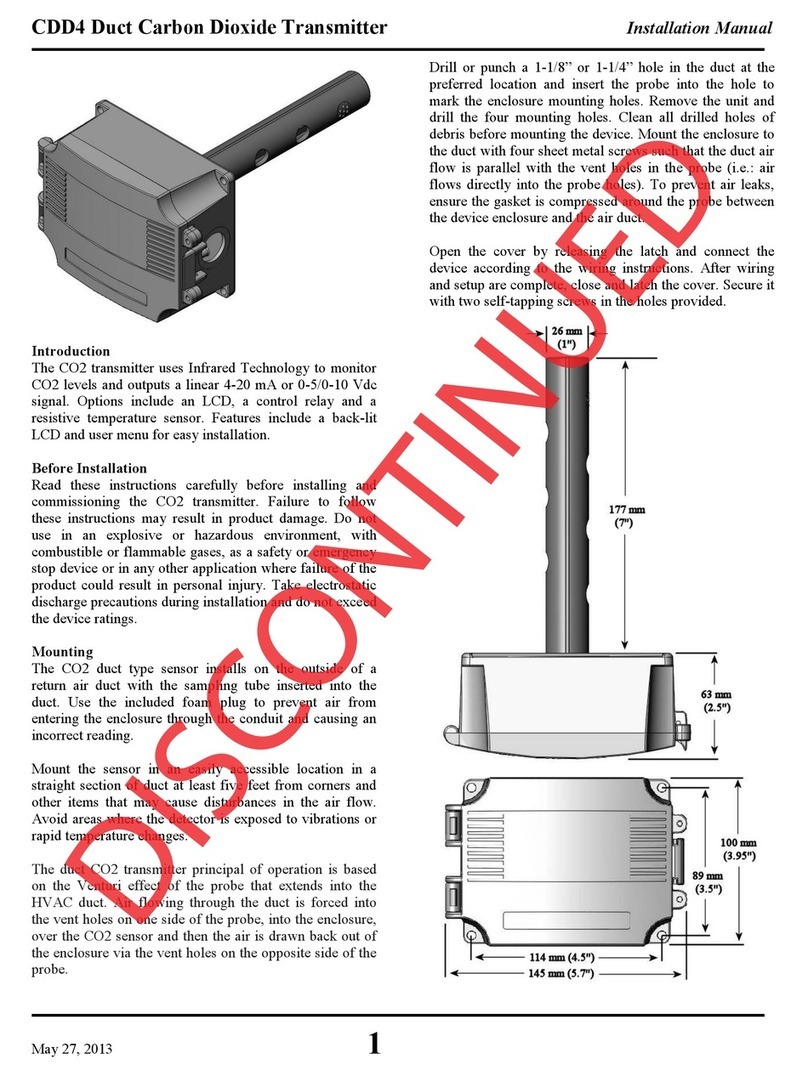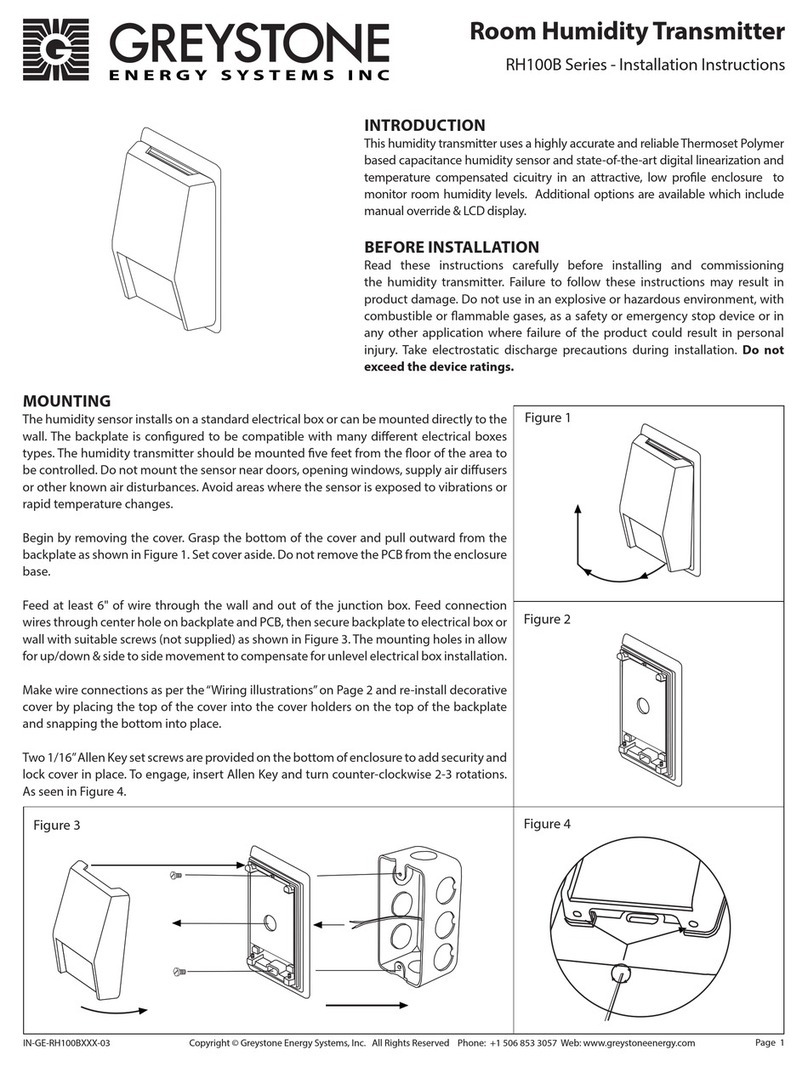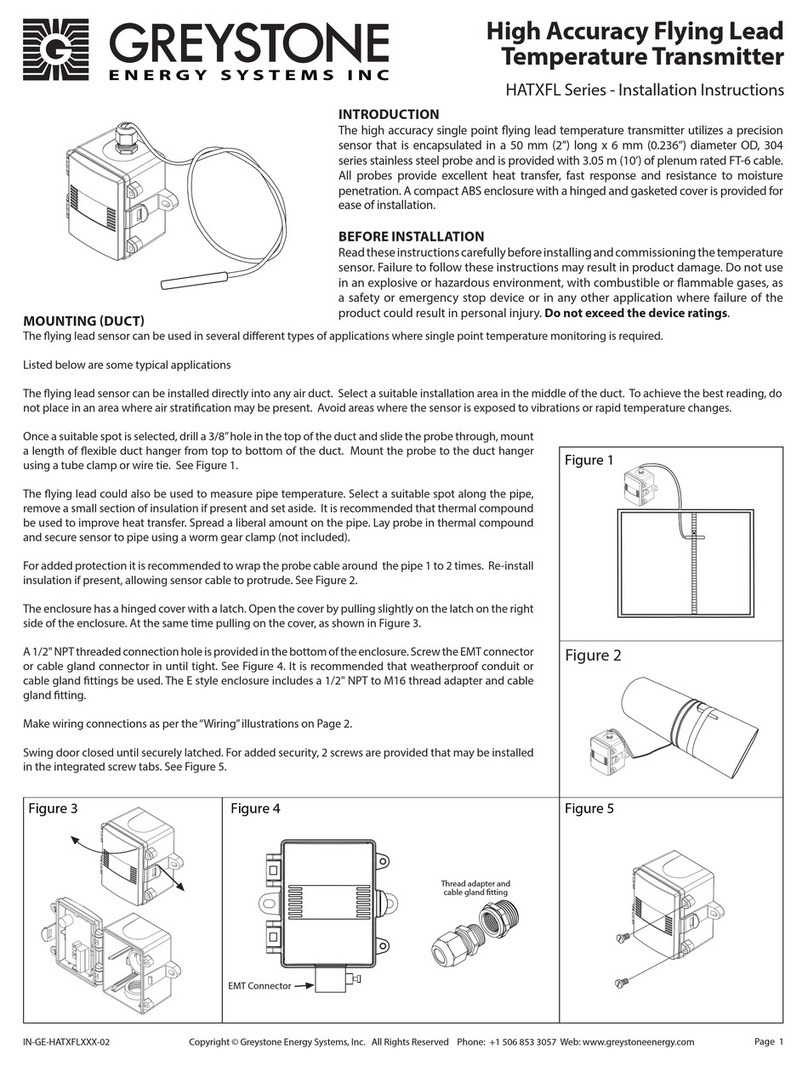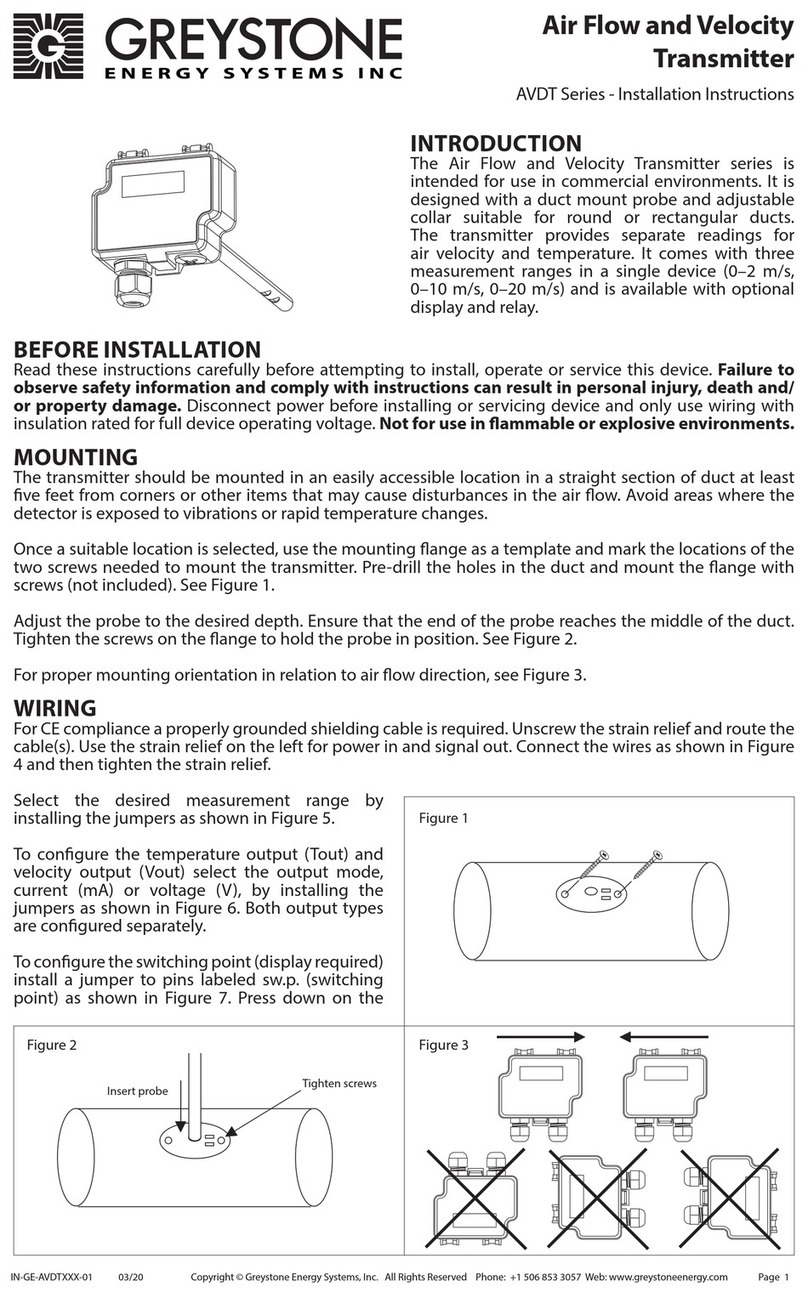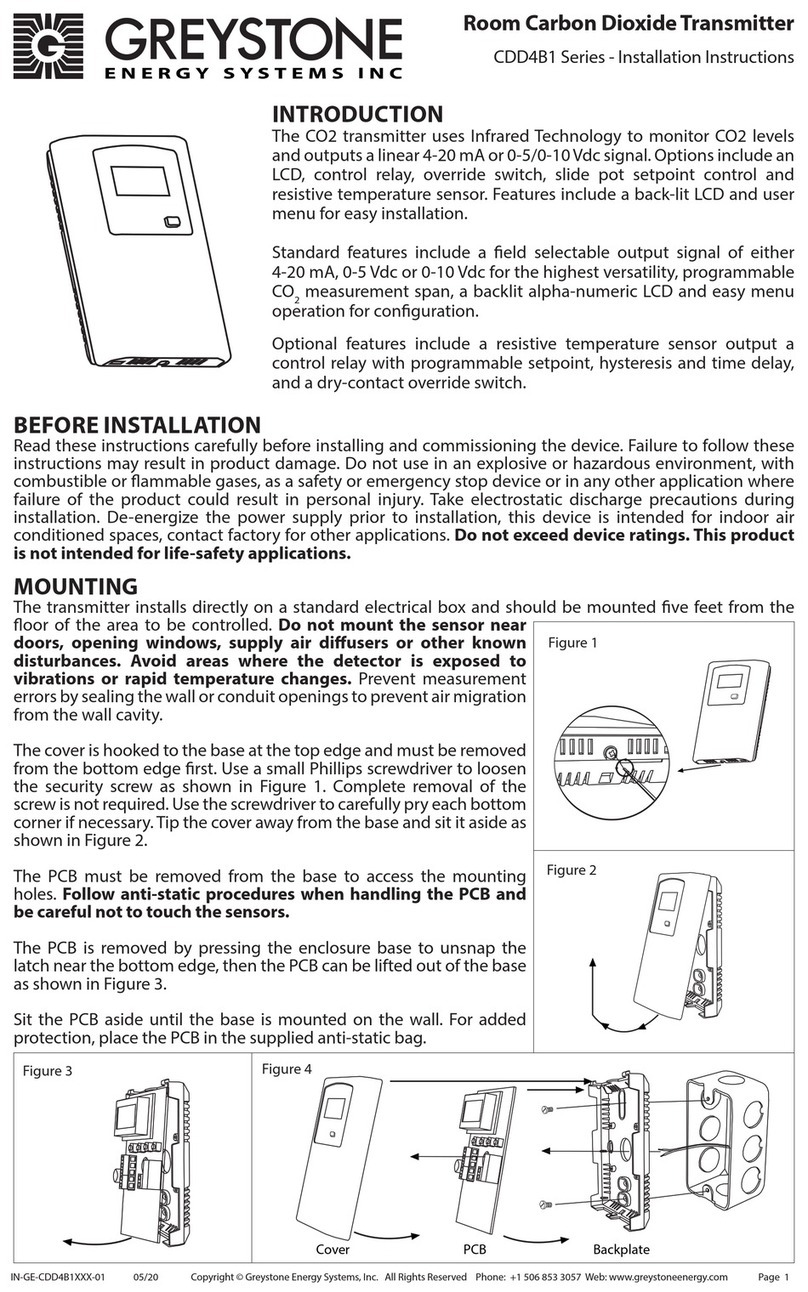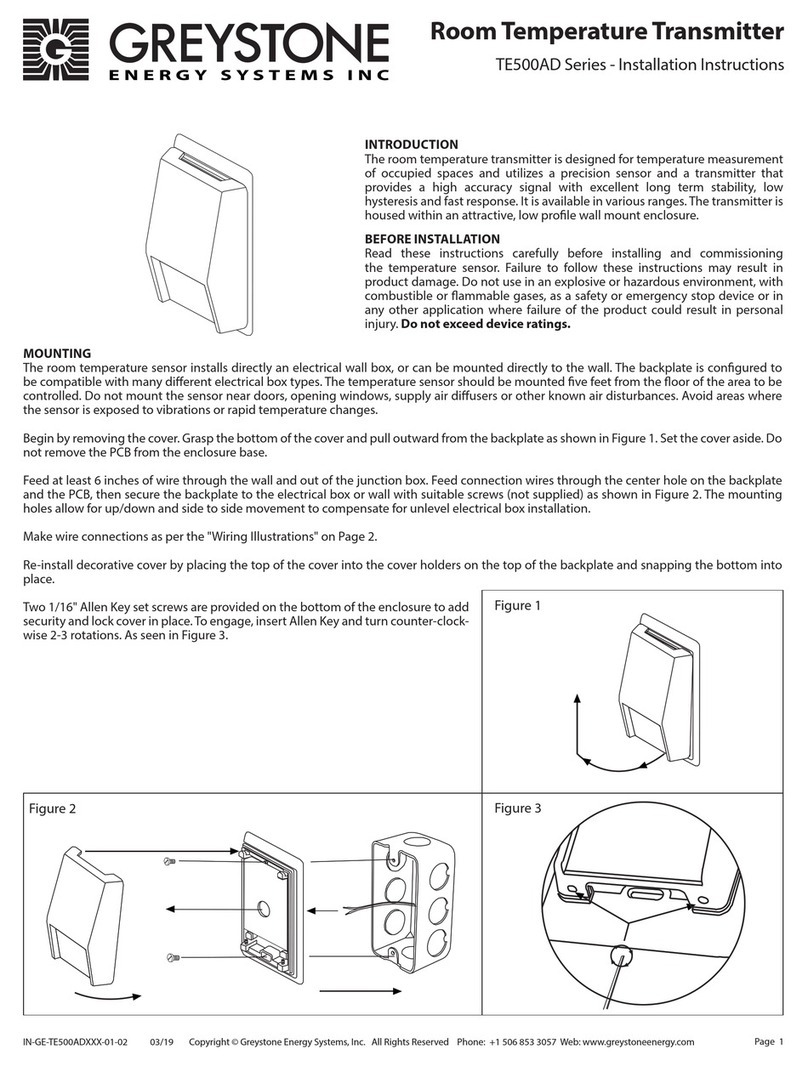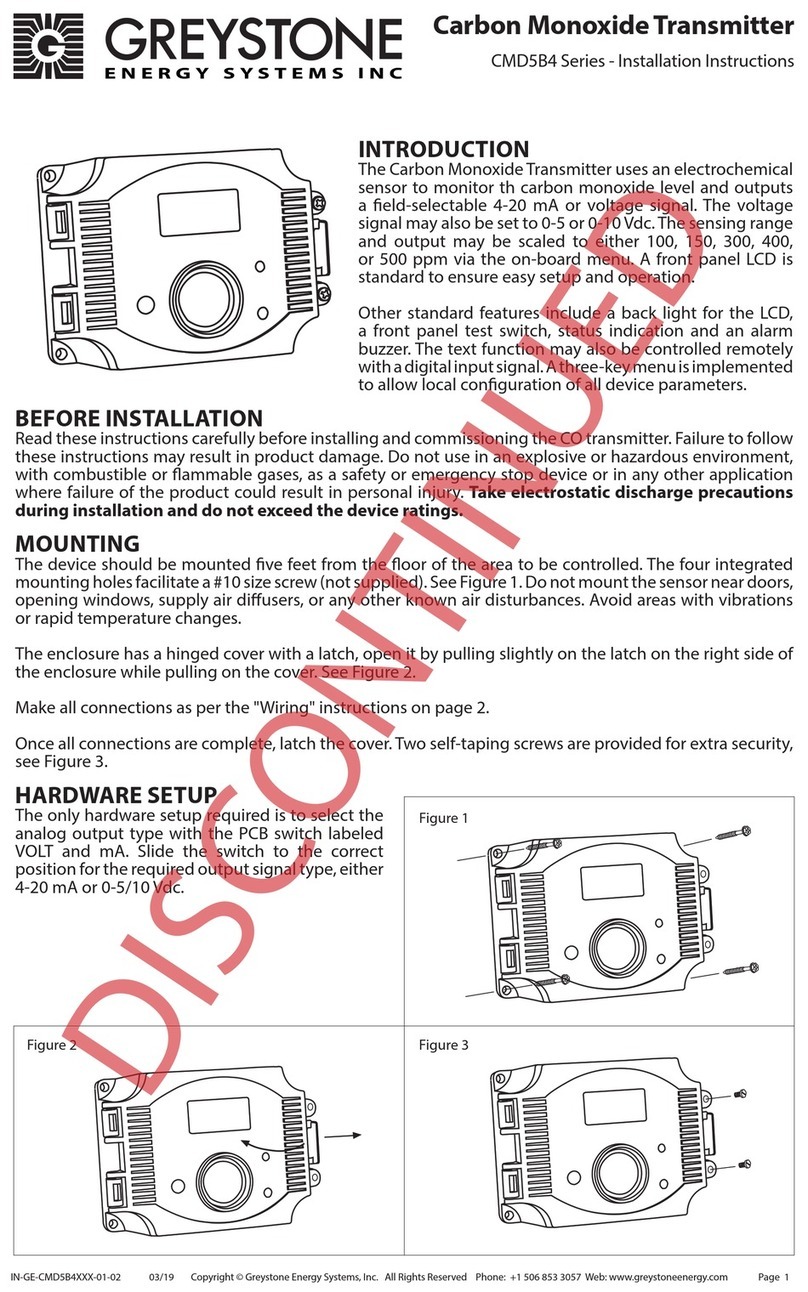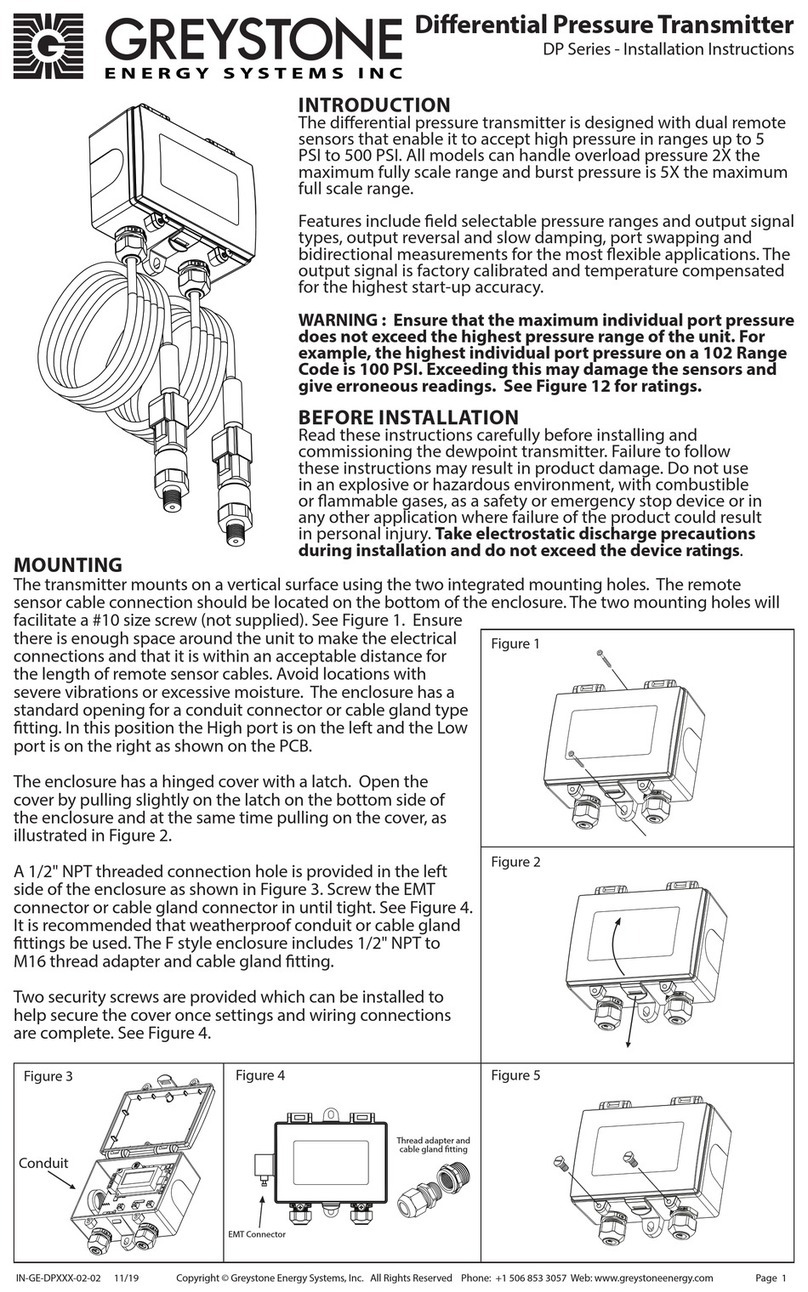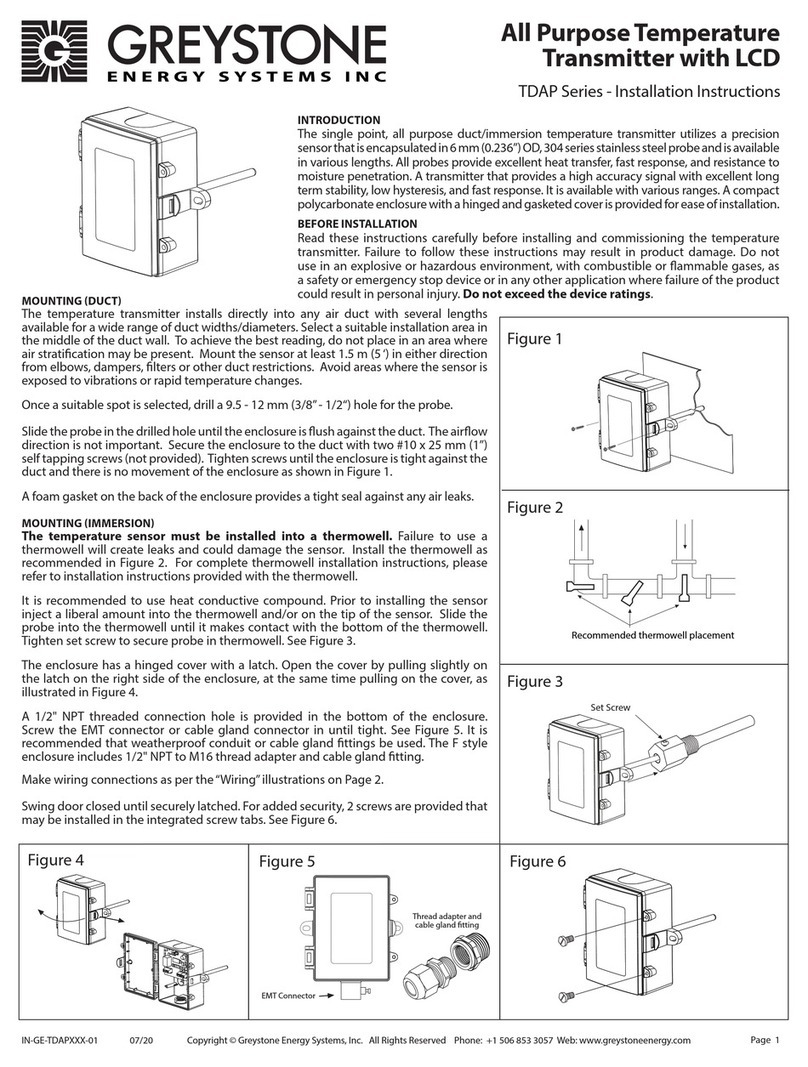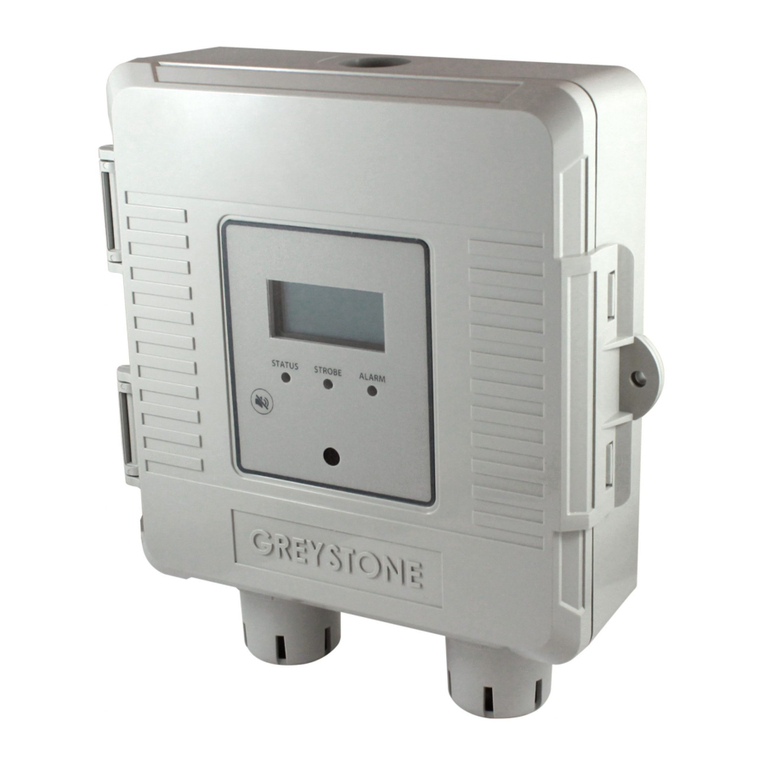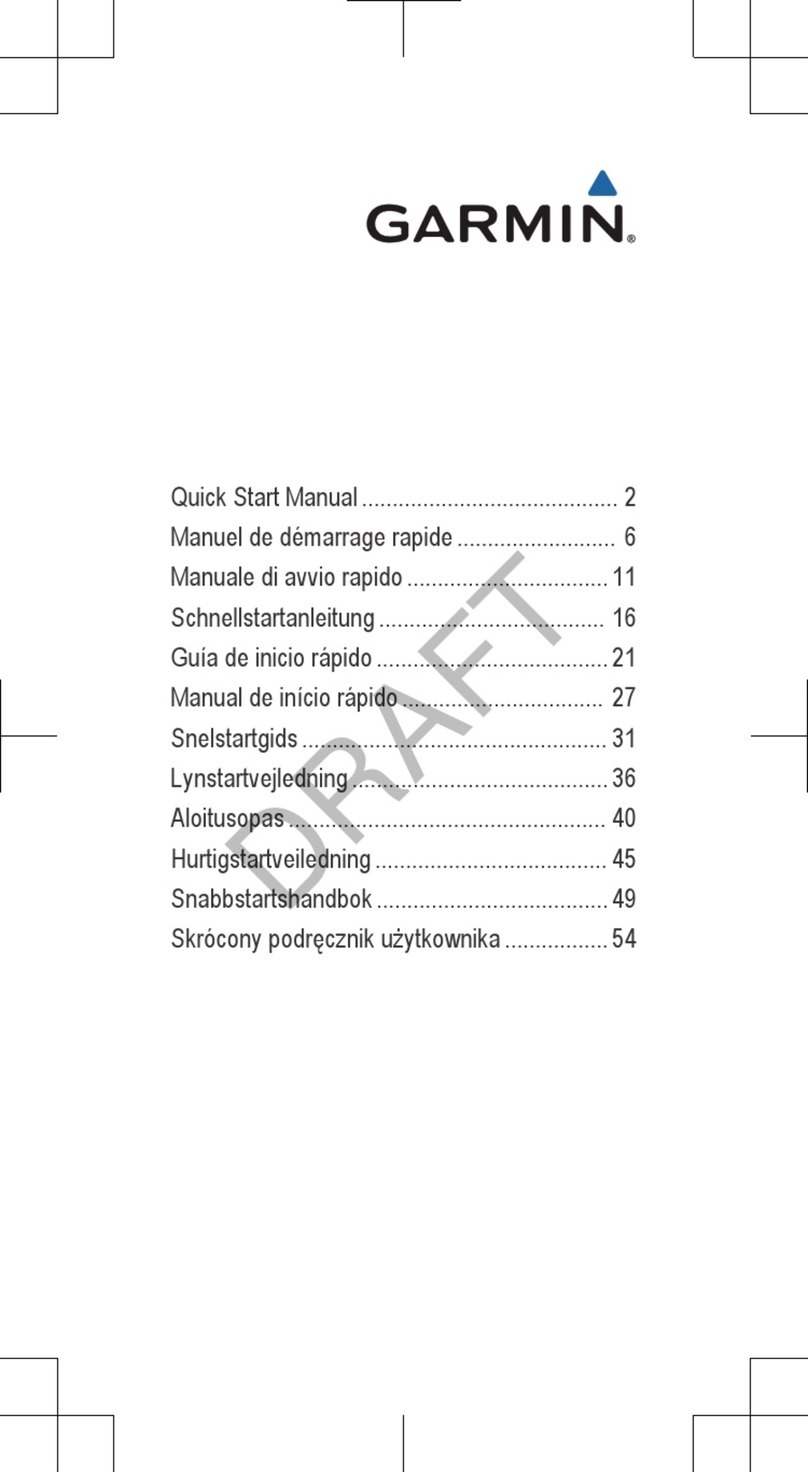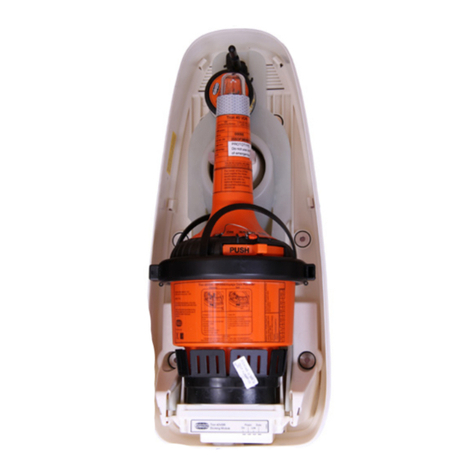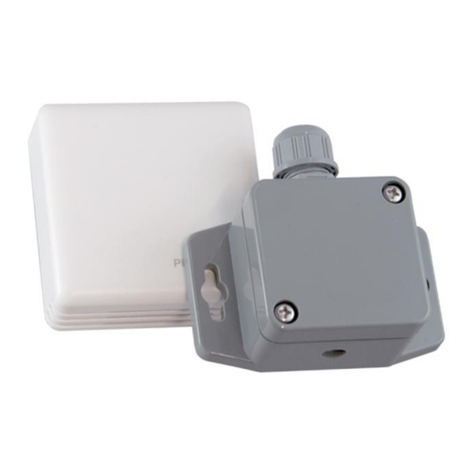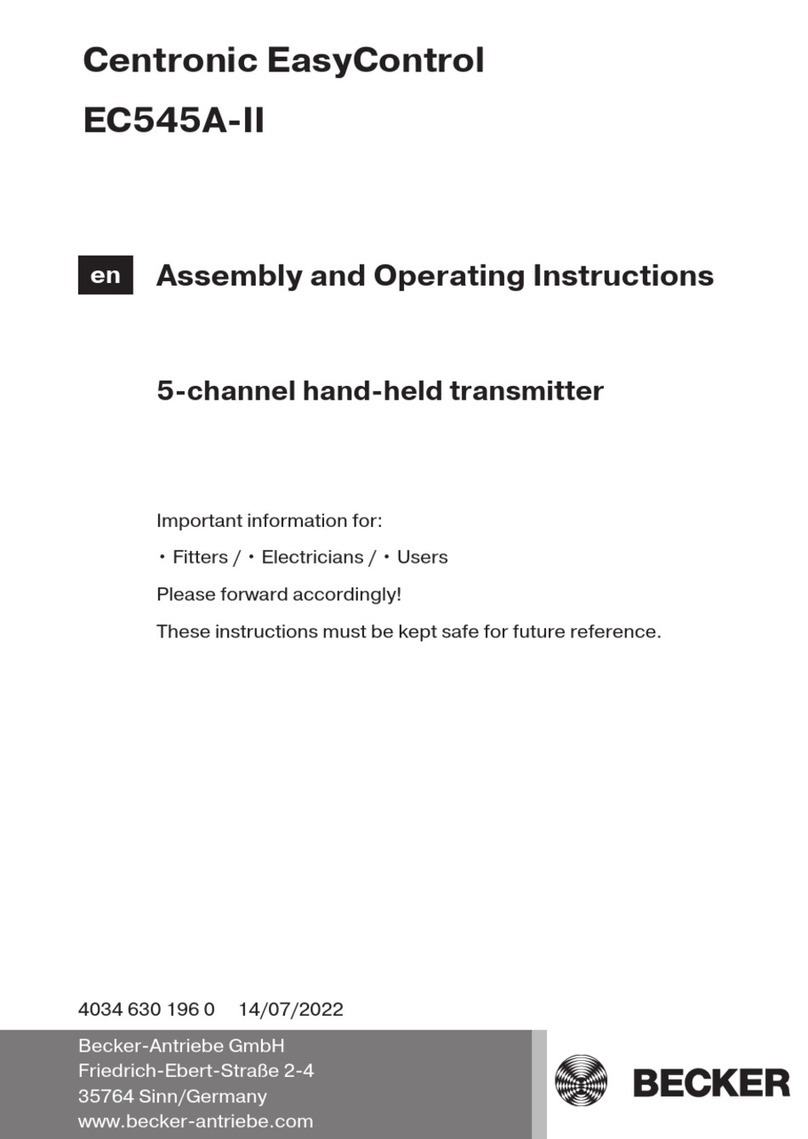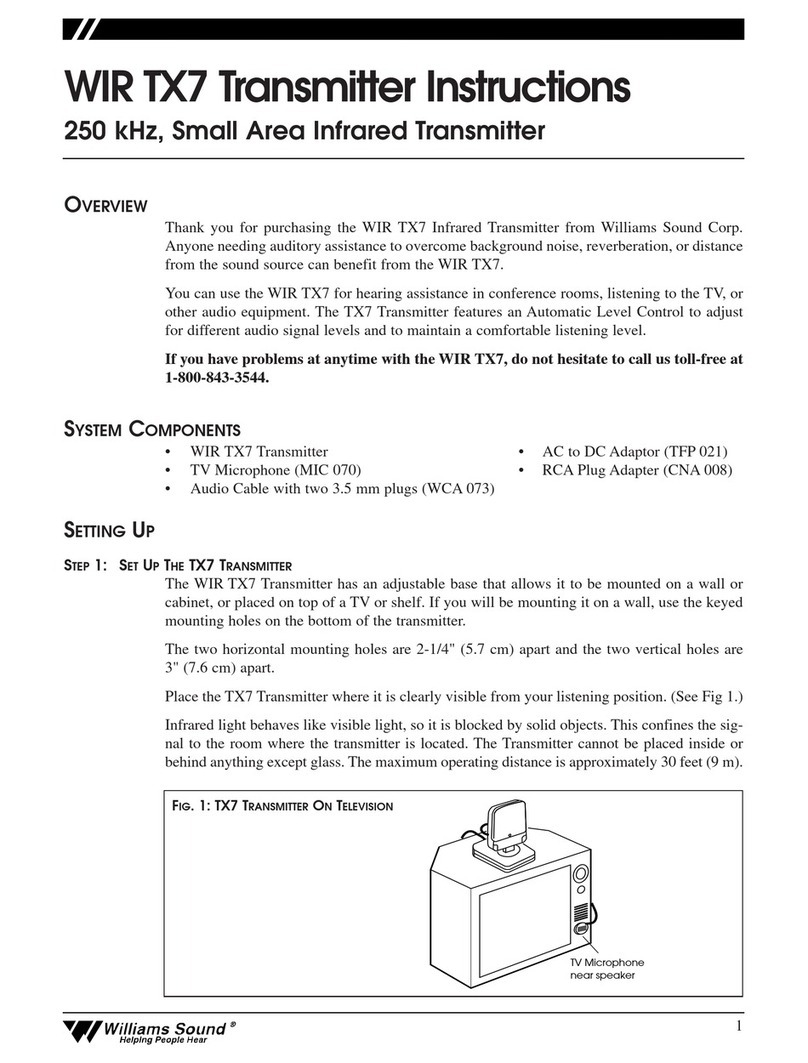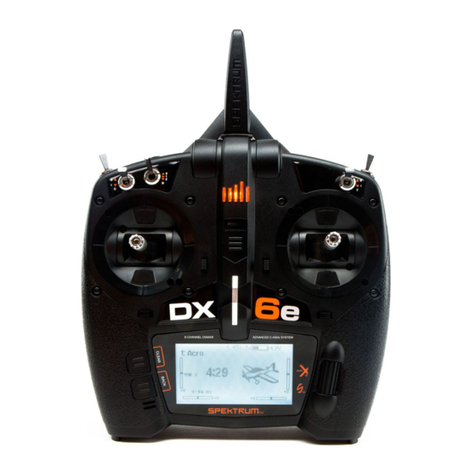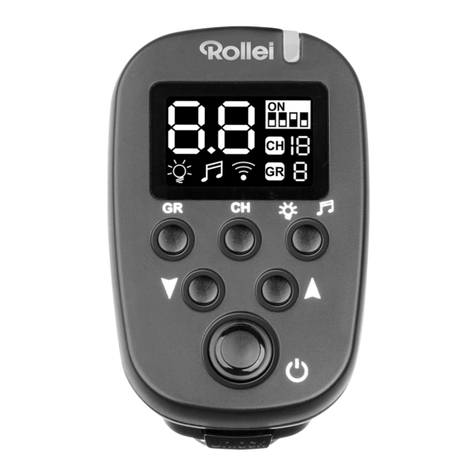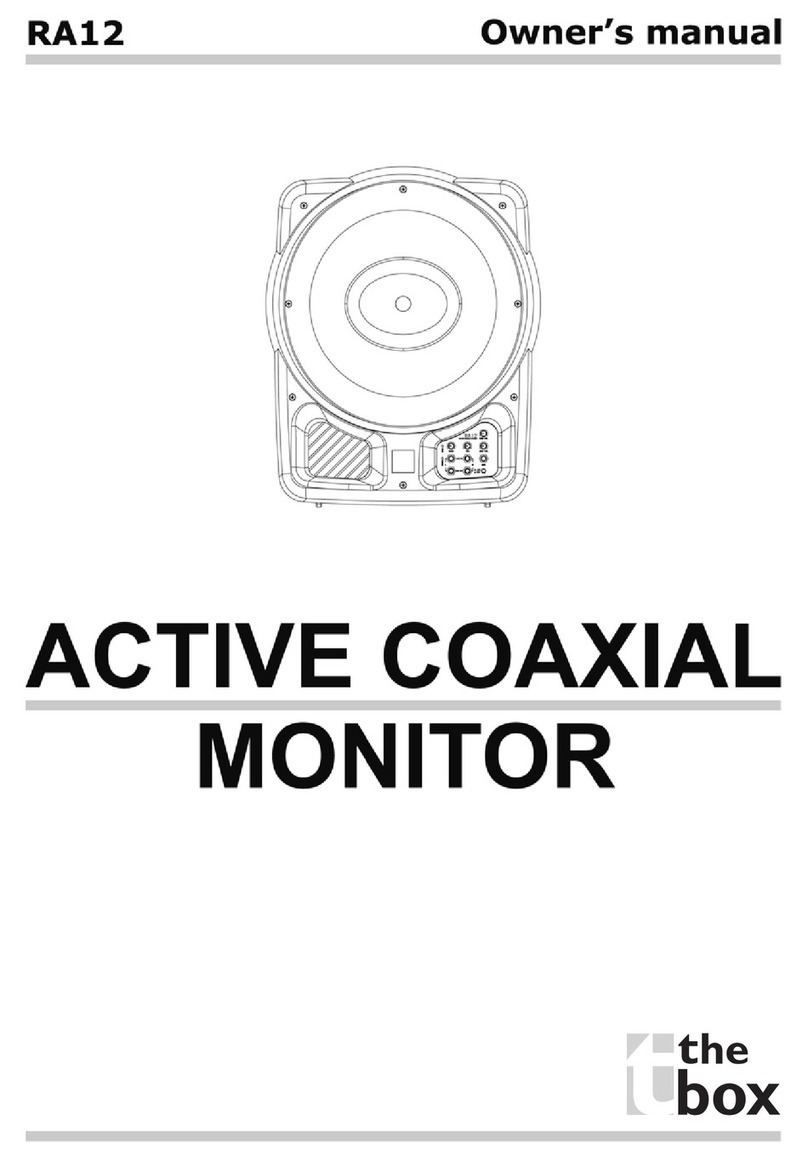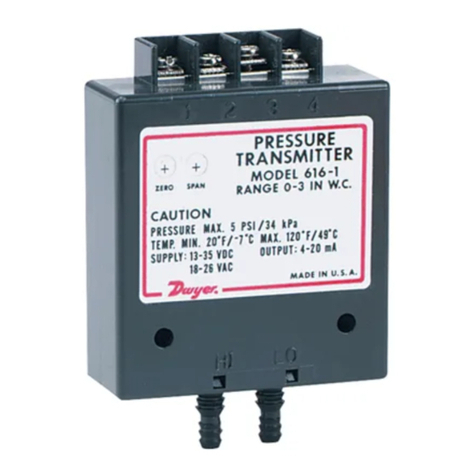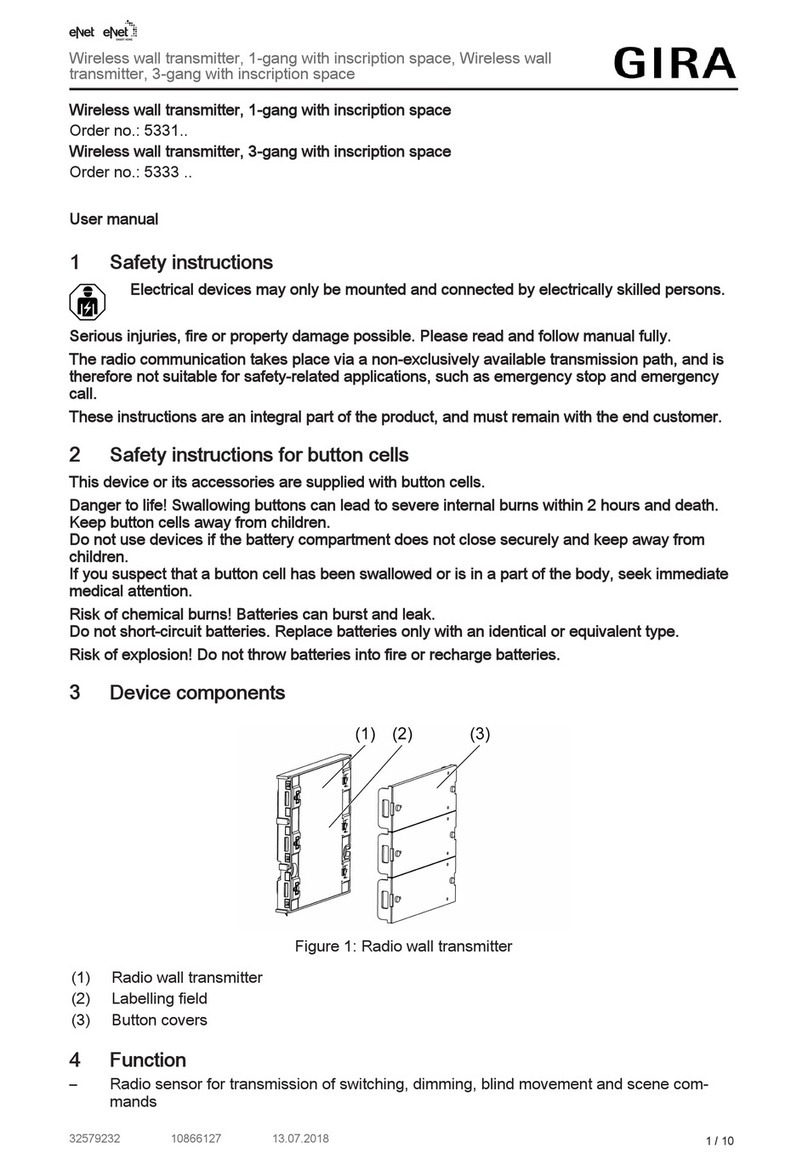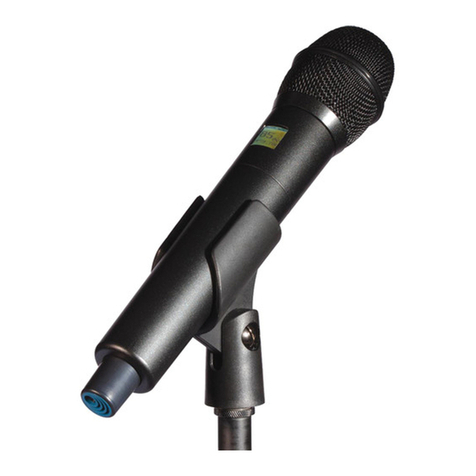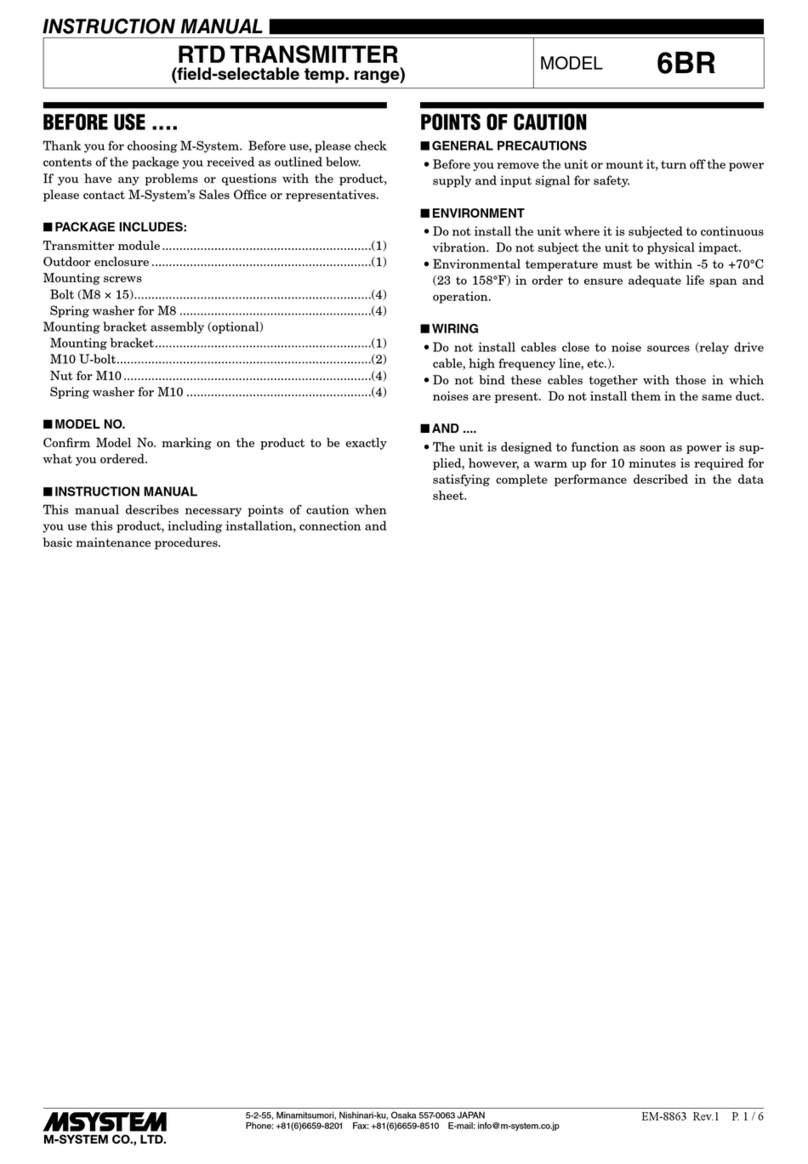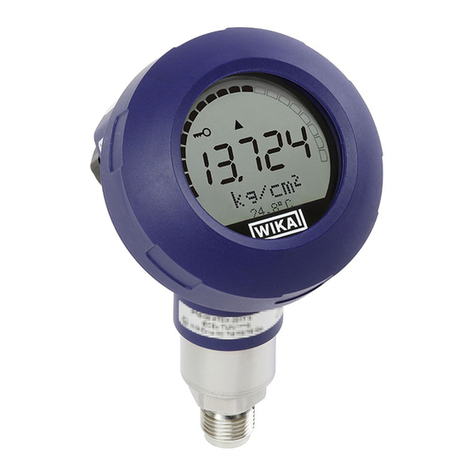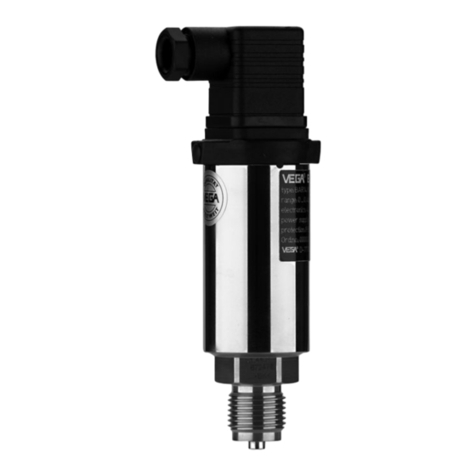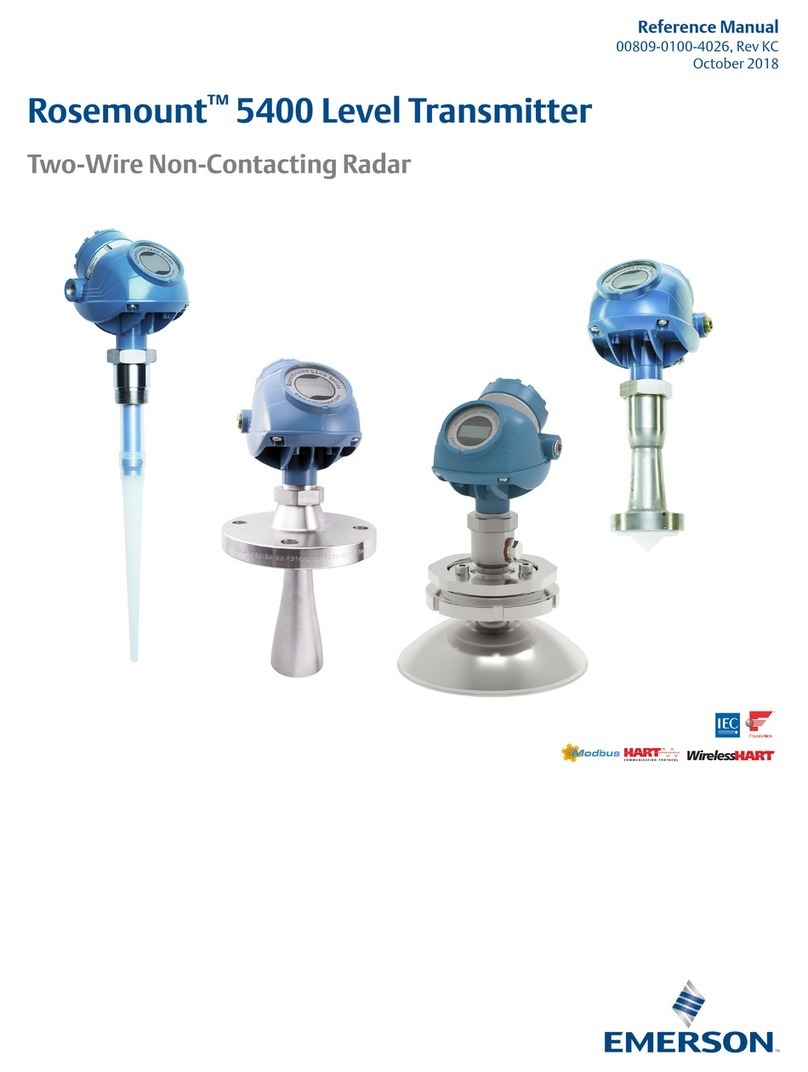
Page 2
WIRING
Use 22 AWG shielded wire for all connections and do not locate the device wires in the same conduit with
wiring used to supply inductive loads such as motors. Disconnect the power supply before making any
connections to prevent electrical shock or equipment damage. Make all connections in accordance with
national and local codes.
Connect either an AC or DC power supply to POWER and COMMON and the 0-10 Vdc signal is available
on the OUTPUT terminal with respect to COMMON as shown in Figure 4. The device is reverse voltage
protected and will not operate if the power supply is connected backwards.
Ensure the controller Analog Input (AI) matches the transmitter output signal type before power is applied.
The output signal has a minimum load that it will drive, follow the ratings in the Specication section or
inaccurate readings may result.
If equipped, the relay output is available on the NO, NC and R.COM terminals. The relay R.COM terminal is
NOT connected to the signal or power supply COMMON terminal. The relay output is completely isolated
and has both Normally Open (NO) and Normally Closed (NC) signals. These signals can be used to directly
control alarms, ventilation fans or may be connected to digital inputs of the B.A.S. for status monitoring.
OPERATION
In normal operation the sensor will measure the CO level in the
surrounding air and output a proportional value on the 0-10 Vdc
output.The CO measurement range is 0-300 ppm. An optional relay can
be used to indicate an alarm condition. The trip point for the relay can
be programmed to three dierent settings with an on-board jumper as
shown in Figure 5. If the CO level exceeds the trip point then the relay is
activated. The relay will remain activated until the CO level drops below
the (trip level – hysteresis) where hysteresis is 3% or 9 ppm.
STARTUP
Verify that the Carbon Monoxide Transmitter is properly wired according to the wiring diagrams and all
connections are tight. Apply power to the device and the sensor will begin reading the CO level and output
the analog signal.
CALIBRATION
The transmitter features a simple snap-mount sensor pcb that is pre-calibrated. This means that the entire
sensor pcb can simply be replaced with a new calibrated pcb if desired without having to remove the
enclosure. This sensor swap requires no tools and can be completed in seconds. Simply disconnect the
device wiring, remove the old sensor pcb, snap in the new pcb and reconnect the device power. There is
no need to make any adjustments or apply gas to the transmitter using the sensor swap method.
The device may also be calibrated or veried with CO gas if required. This requires a eld calibration kit
consisting of a bottle of gas (250 ppm CO in air for example), a tank pressure regulator with ow restrictor
and the necessary tubing with a calibration cap to cover to the sensor. Calibration can be done at 20-27 °C.
Figure 4
Figure 5
Analog Input for 0-10 Vdc CO Signal
HI
MID
LOW
RELAY TRIP
PWR
COM
OUT
NO
NC
R. COM
HI
MID
LOW
RELAY TRIP
SPAN ZERO
CO
SENSOR
CWR
Controller
24 Vac Power
Analog Input for
0-10 Vdc CO signal
Hot
Com
PWR
COM
OUT
+
Controller
24 Vdc Power
PWR
COM
OUT
Analog Input for
0-10 Vdc CO signal
IN-GE-CMD5B1XXX010-002 Copyright © Greystone Energy Systems, Inc. All Rights Reserved Phone: +1 506 853 3057 Web: www.greystoneenergy.com
